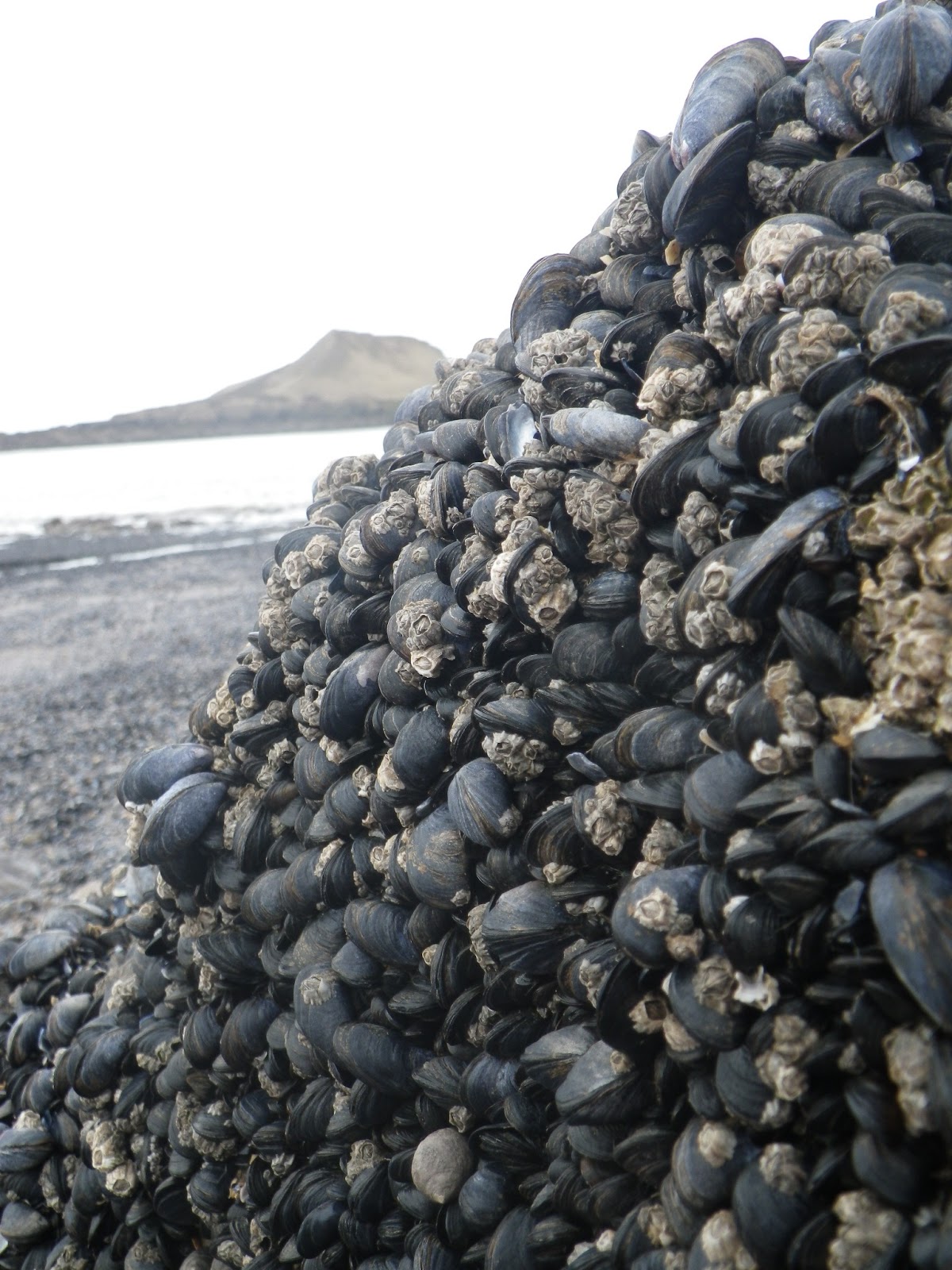The shore at Seapalling is influenced by a series
of artificial sea defences that have changed the dynamics of the
shore to produce multiple bays comprised of mobile sands with shingle
berms in between.
The hard substrate is characterised by a barnacle community
with periwinkles, limpets, dog whelks and beadlet anemones. The lower edges of
the breakwater harbour occasional seaweeds, whilst beneath the sea defences are
a network of tidal pools.
Since October, the deposition of sediments has changed again
and a strand line has formed, whilst there has been further die back of
seaweeds.
Habitat classifications:
Substrate
|
LR (Littoral rock)
|
LS (Littoral substrate)
|
Habitat
|
HLR (High energy littoral rock)
|
FLR (Features of littoral rock)
|
LS.LSa (Littoral sand)
|
Biotope complex
|
LR.HLR. MusB (Mussel and/or barnacle
communities)
|
Eph.FLR.Eph (Ephemeral green or red
seaweed communities
|
LS.LSa.sh (Shingle and gravel shores)
|
LS.LSa.St (Strandline)
|
LS.LSa.MoSa.BarSa (Barren littoral
coarse sand)
|
Biotope
|
|
LR.FLR.Eph.EntPor (Porphyra purpurea
and Entomorpha spp. on sand scoured lower eulittoral rock)
|
|
|
|
Below are images of some of the organisms you may encounter
whilst rock pooling in these habitats:
 |
| The
sea defences provide an artificial hard substrate amongst the littoral
sediments of the shore. During the winter months strandlines of washed up
hornwrack (Flustra foliacea) form. Habitat
classification: LR.HLR (High energy littoral rock), LS.LSa (Littoral sand) and LS.LSa.St (Strandline). |
.jpg) |
| The
sea defences comprise large rectangular boulders that have relatively shear
faces. Habitat classification: LR.HLR (High energy littoral rock). The littoral
sediments surrounding the sea defences continually experience the dynamic
forces of erosion and deposition. At
this time sand has been deposited against the sea defences, while review of
this location in October (image below)
shows a lower sediment level that is comprised of sand and shingle. |
oct.jpg) |
| The
same location as above but a few months previous shows how the sediment
distributions have changed, from sand and shingle to increased deposition of
sand. |
 |
| Rocky
shore communities have formed on the artificial sea defences; barnacles,
limpets and periwinkles occur throughout and characterise the biotope
complex LR.HLR.MusB (Mussels and/or barnacles in high energy littoral rock). |
 |
| Spiral
wrack (Fucus spiralis) has experienced further die back since October (see
image below). |
 |
| Spiral
wrack (Fucus spiralis) in October. |



























.jpg)
oct.jpg)




.JPG)



.JPG)
.JPG)



.JPG)
.JPG)